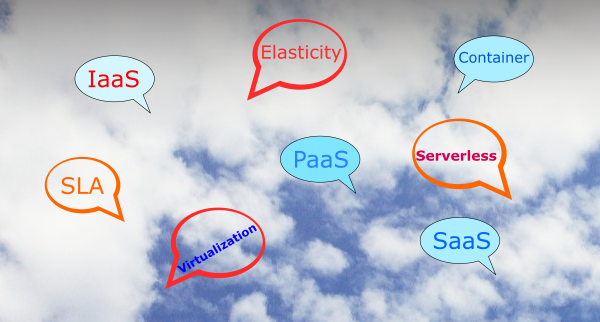Cloud Based Technologies Present New Paradigms for Technology Transfer

Background Overview
Innovations based on scientific and technological knowledge have underpinned successful developments all over the world. These developments span from poverty-reduction efforts in developing countries to tackling some grand challenges in the industrialized world. Regardless of where the developmental efforts are, they all have a common theme of boosting economic growth in order to overcome challenges for improving human needs. Simply put, it is a process of converting innovations into economic growth.
In the developing countries the history of science and technology for development is not without its challenges and controversies. This is because technology transfer at best has a patchy record of success in meeting the desired objectives of sustaining economic development. Research studies by academia, government agencies and international organisations have attempted to highlight these challenges with recommendations to mitigate the underlying problems.
It is possible to make an educated guess as to the likely problems: (1) inadequate pool of skilled personnel for innovation (brain drain being a contributory factor for most developing countries), (2) inadequate resources, particularly for capital intensive technologies, (3) limited markets for innovation, (4) inability to make public investment, (5) poor planning, and (6) bureaucratic and anti-business climate, just to mention a few. While these basic problems are easily identifiable, the developmental challenges in a given situation become more complex depending on to what extent these problems interact with each other and, more importantly, with the socio-economic, political, cultural, environmental, and other local factors where the transfer of technology is being attempted.
In the final analysis, experts agree that the failure of technology transfer is mainly due to little attention given to how well technological innovations fit in the developing countries’ contexts and experiences. In other words, to sustain development there must be a scope for learning, experimentation and sense of ownership that is grounded in a country where technology is transferred. This approach, it is argued, will change the whole aspect, from technology transfer target, to technology transfer of equal partnership. It eliminates the cultural insensitivities of the cut-and-paste approach dictated from the top, instead creating and nurturing a mindset for improved practices that can sustain the development.
Enter cloud-based technologies and it becomes quickly apparent that there is a radical shift in how we access technological innovations as compared to other technologies. This is the case because cloud-based technologies, for the most part, are about delivering computing services without the physical technologies crossing borders. There is no doubt that this unique feature of cloud-based technologies presents a fresh approach to the process of technology transfer.
Transfer of Cloud-Based Technologies
The information and communication technology (ICT) sector, which encompasses the Internet, is making momentous advances by creating innovative cloud-based technologies that will have transformative impact. Chief among these emerging technologies is Cloud Computing which will be used for the purpose of this article.
For background information read this and a related article presented in the context of developing countries. The related article outlines key features of Cloud Computing and concludes that there are compelling reasons for developing countries to be prepared in order to take advantage of the economic transformations made possible by cloud-based technologies.
Close inspection of key features for Cloud Computing, in fact, provides a new perspective for technology transfer in comparison to the conventional approaches witnessed over the past decades. It is argued that Cloud Computing and related emerging technologies have important attributes that are indispensable for successful technology transfer. The following paragraphs summarise why innovation with Cloud Computing can be transferable with more success.
Note: It’s assumed that the requisite Internet infrastructure is in place to support cloud services although major improvements may be necessary for enhanced services. Improving Internet infrastructure (say, based on mobile and wireless networks) may be a complementary developmental programme.
- Cloud Computing avoids or minimizes up-front IT infrastructure costs. This is the case because all the computing power is in the cloud. This mitigates a serious challenge of inadequate resources as cited in the section above.
- Cloud Computing has minimal to zero manageability and maintenance requirements. This minimizes the skill base requirement in developing countries by instead targeting the available skills to where it is most needed. This again mitigates the skill base challenge cited in the above section.
- Security concerns are also significantly minimized by adhering to more coherent security and protection strategies as outlined by cloud providers (because hardware and software reside in the cloud and service providers have shared responsibility). This again means less skill base requirement.
- Cloud Computing skill base is more streamlined with the main focus on developing and deploying solutions (due to the fact that labor and skill intensive physical hardware and infrastructure are replaced by the cloud!). This indicates that skilled workforce for innovations based on Cloud Computing can be trained with more focus over a relatively short time. This is instrumental in rapid capacity building at various levels by augmenting technical with business and management skills.
- Cloud Computing is inherently green technology as it’s based on resource sharing and consolidation of IT infrastructure. A smartphone or low power display would be a typical connection at the user side and this will significantly reduce the consumption of electricity. It would be easy to contrast this with desktop and laptop alternatives. Green technology is indeed an aspiration for every country and a big plus as part of any technology transfer. This addresses another challenge with technology transfer, namely impact on the environment.
- Cloud Computing eliminates numerous problems inherent with the conventional computing approach, for instance, unpredictable and/or fluctuating demands that can have serious impact on conventional IT, whereas such problems can be easily overcome by increasing on-demand resources that Cloud Computing can readily provide. There is no lead time in acquiring new hardware/software nor disruptions with equipment commissioning.
- The operative term in any successful technology transfer is diligent planning to fit in the developing country contexts and realities. Cloud Computing offers on-demand resources and in most cases based on a consumption model as for public utilities. Businesses have full control on the scaling based on demand and still staying within their budget. This puts users of the cloud technology at the centre of control on how resources are allocated and consumed, a far cry from conventional technology transfer when it comes to controlling and experimenting with technology.
- Strange as this may sound, if everything is done in a timely and effective manner, the benefit of late comer effect can leapfrog developing countries. This is the case, because developed countries are migrating to the cloud from their legacy systems, which is relatively slow and at times could be daunting. An example of benefit of late comereffect, of a different context but instructive one, was observed following the German reunification where most of the infrastructure for what used to be East Germany was upgraded to latest technology of the day.
Conclusion
To sum up, the key benefits associated with Cloud Computing all work in concert to eliminate or mitigate the challenges of technology transfer widely studied over the years. It should be noted that the appeal for Cloud Computing is not limited to the above factors. There are countless applications to be built with innovative solutions that Cloud Computing and connected devices (Internet of Things or IoT) make possible, which is a subject for another discussion. It is therefore high time that developing countries prepare now to reap the benefits of Cloud Computing and, in fact, of all cloud-based technologies.
☀☀☀
© 2018 Demessie Girma















0 Comments